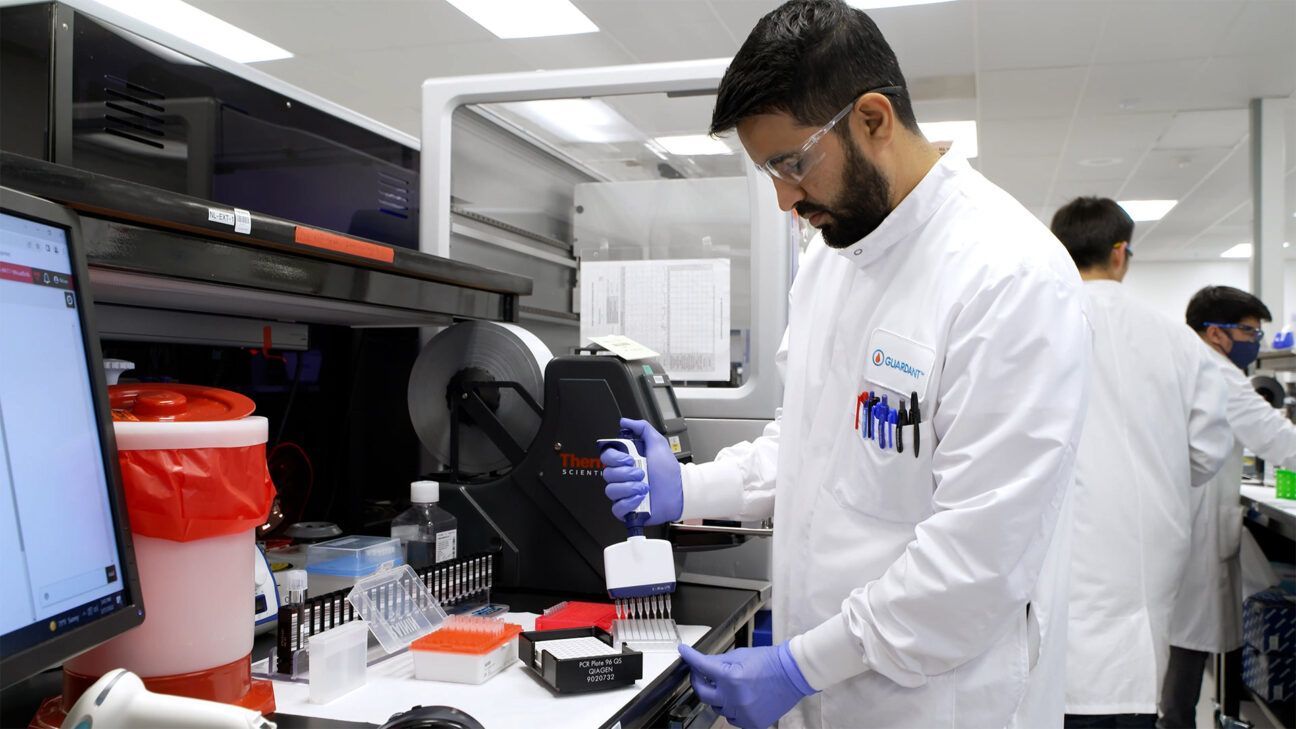Aspirin Use May Help Lower Colorectal Cancer Risk, Study Finds

- People who use aspirin regularly have a lower risk of colorectal cancer compared to those who don’t use aspirin regularly, a new study shows.
- The benefits were greatest for people with an unhealthy lifestyle, such as moderate or heavy smokers, and those with overweight or obesity.
- People with the healthiest lifestyle — whether or not they used aspirin regularly — had a lower risk of colorectal cancer compared to people with the unhealthiest lifestyle who used aspirin.
In the United States, an estimated 152,810 people will be diagnosed with colorectal cancer in 2024, with more than 53,000 deaths this year due to this cancer, according to the National Cancer Institute.
While rates of colorectal cancer in the country declined by about 1% each year from 2011 to 2019, this has been mostly in older adults, the American Cancer Society (ACS) reports. In contrast, ACS said rates among people under 55 years old have increased by 1% to 2% since the mid-1990s.
Genetics plays a role in the development of colorectal cancer. For example, people whose parent, sibling or child had colorectal cancer are at an increased risk.
However, lifestyle factors can also increase a person’s risk of colorectal cancer, including having overweight or obesity, having type 2 diabetes, eating an unhealthy diet, smoking tobacco, and drinking alcohol.
Now researchers from Massachusetts General Hospital and Harvard Medical School have found that regular aspirin use may lower colorectal cancer risk in people with unhealthy lifestyles.
The study was published Aug. 1 in JAMA Oncology.
Mixed evidence on the anticancer effects of aspirin
Previous research showed that regular aspirin use can lower the risk of colorectal cancer.
In 2016, the US Preventive Services Task Force (USPSTF) recommended low dose aspirin for colorectal cancer prevention in adults ages 50 to 59.
However, in 2022, the USPSTF withdrew its recommendation, citing a lack of evidence showing that aspirin reduces a person’s chance of developing or dying from colorectal cancer.
Long-term use of aspirin can also cause gastrointestinal bleeding, ulcers and other complications.
Given that some earlier research showed that aspirin reduced the risk of colorectal cancer, the authors of the new study decided to look at whether this benefit was higher for people with certain lifestyle factors.
For the study, they examined data from more than 107,000 people who participated in the Nurses’ Health Study or the Health Professionals Follow-up Study.
The average age of participants was 49 years. They were all health professionals, and most were white. Additional research would be needed in more diverse populations to see if the results would be the same.
Researchers followed participants for more than three decades. During this time, participants completed surveys about five lifestyle factors: body mass index (BMI), whether they smoked tobacco or used alcohol, and their physical activity and diet.
Participants also reported on their use of aspirin or other medications and whether they developed any diseases during the study period, including colorectal cancer.
Researchers defined regular aspirin use as two or more standard-dose tablets per week or six or more low-dose tablets per week.
Aspirin lowers colon cancer risk for adults with unhealthy lifestyles
Overall, the risk of developing colorectal cancer over a 10-year period was 1.98% among participants who used aspirin regularly, compared with 2.95% for people who didn’t use aspirin regularly.
When comparing these two groups, researchers found that regular users of aspirin had an 18% lower relative risk of being diagnosed with colorectal cancer, compared with people who didn’t use aspirin or used it less often.
Participants with unhealthier lifestyles benefitted the most from regular aspirin use in terms of lowering their relative risk of colorectal cancer. The greatest benefits occurred for moderate or heavy smokers and people with a BMI of 25 or greater.
BMI is a screening measure for having overweight or obesity. Generally, a healthy weight for adults 20 years and older is a BMI of 18.5 to less than 25. However, BMI is not always reliable during pregnancy or for athletes or older adults.
The study also showed that people with healthier lifestyles benefitted from regular aspirin use, but less so.
It also reinforces the overall benefits of a healthy lifestyle. People with the healthiest lifestyle — whether or not they used aspirin regularly — had a lower 10-year risk of colorectal cancer compared to regular aspirin users with the unhealthiest lifestyle.
The study does not show how regular aspirin use might help. Still, the authors point to previous research suggesting that aspirin may inhibit pro-inflammatory signals contributing to cancer growth.
Given the risks of long-term use of aspirin — such as gastrointestinal bleeding — the authors write that “these results support the use of lifestyle risk factors to identify individuals who may have a more favorable risk-benefit profile for cancer prevention with aspirin.”
A growing need for personalized medicine
Wael Harb, MD, a hematologist and medical oncologist at MemorialCare Cancer Institute at Orange Coast and Saddleback Medical Centers in Orange County, CA, said the new study’s results might prompt the US Preventive Services Task Force to reconsider the regular use of aspirin for the prevention of colorectal cancer. Harb wasn’t involved in the study.
However, Jason Zell, DO, MPH, a hematology-oncology specialist at the UCI Health Chao Family Comprehensive Cancer Center and associate professor at the UCI School of Medicine, questions whether the study is strong enough to change the USPSTF recommendations. Zell was likewise not involved in the study.
This was not a randomized controlled trial (RCT) that compared people who took aspirin to those who didn’t. “As such, this level of evidence is insufficient to change USPSTF recommendations,” he said.
In addition, “the USPSTF withdrew its recommendations for aspirin use — which was limited to a very small portion of the population anyway — in part due to complications such as bleeding,” Zell said.
The new study did not provide data on how many people taking aspirin regularly had bleeding or other complications, he said. This information could influence the assessment of the risks and benefits of regular aspirin use in people with unhealthy lifestyles.
Overall, “while this level of evidence is not enough to change physician recommendations about aspirin, it certainly could spawn more detailed future research,” Zell said, such as that “related to the benefits and risks of regular aspirin use in those with varying degrees of healthy or unhealthy lifestyles.”
Harb thinks the study, which implies that aspirin’s preventive benefits may vary based on individual lifestyle factors, “could lead to more personalized recommendations from physicians.”
Anton Bilchik, MD, PhD, surgical oncologist, chief of medicine and director of the Gastrointestinal and Hepatobiliary Program at Providence Saint John’s Cancer Institute in Santa Monica, CA, agreed. Bilchik wasn’t involved in the study.
“This study shows that taking two regular aspirins a week reduces the risk of getting colon cancer,” he said. “It also identifies groups of patients — particularly those that are obese or smokers — who are more likely to benefit from aspirin.”
Ask you doctor about daily aspirin use
Bilchik emphasizes that patients who are concerned about their risk of colorectal cancer should talk with their doctor before starting to take aspirin regularly.
“Although aspirin is a very safe drug, there is group of patients that may be at higher risk of gastrointestinal bleeding,” he said. “It’s not a common side effect of aspirin, but no one should routinely take two large aspirins a week without consulting their doctor.”
When they do, they should also ask about other ways to reduce their cancer risk.
“This study adds to the growing body of evidence on the importance of diet and lifestyle modifications in preventing colorectal cancer,” Zell said.
These kinds of lifestyle changes can reduce your risk of other types of cancer, cardiovascular disease, and other health problems, pointed out Harb, which is why doctors always recommend that patients reduce these risk factors.
However, “in reality, even with our best efforts, some of these factors might not be modifiable, or people might not be able to change them,” he said.
“So in the interim, while we’re trying to change this behavior, it’s reasonable to consider regular aspirin use as way to reduce the risk of colorectal cancer, he said.
Takeaway
Researchers examined data from more than 107,000 health professionals who took part in two long-term studies. Participants answered surveys about lifestyle factors and use of aspirin or other medications.
People who used aspirin regularly had a lower risk of being diagnosed with colorectal cancer, compared with people who didn’t use aspirin regularly.
The largest benefit of aspirin was for people with the unhealthiest lifestyle, including moderate and heavy smokers, and people who had overweight or obesity.
People with the healthiest lifestyle — whether or not they used aspirin regularly — had a lower risk of colorectal cancer compared to people with the unhealthiest lifestyle who used aspirin regularly.






